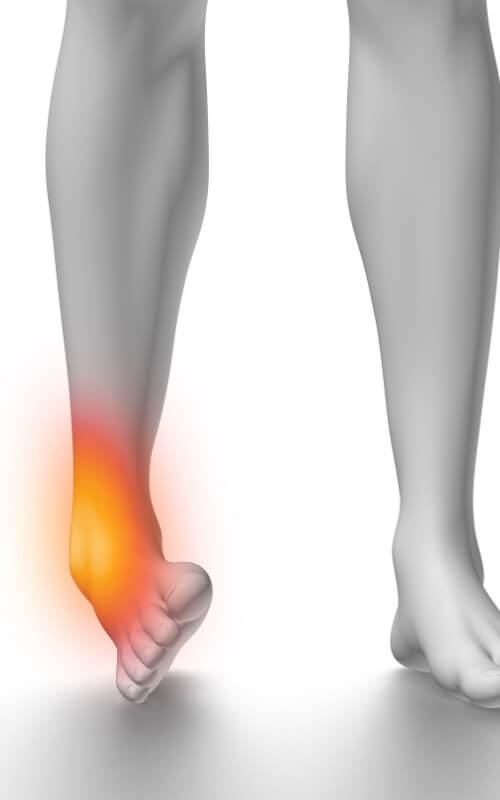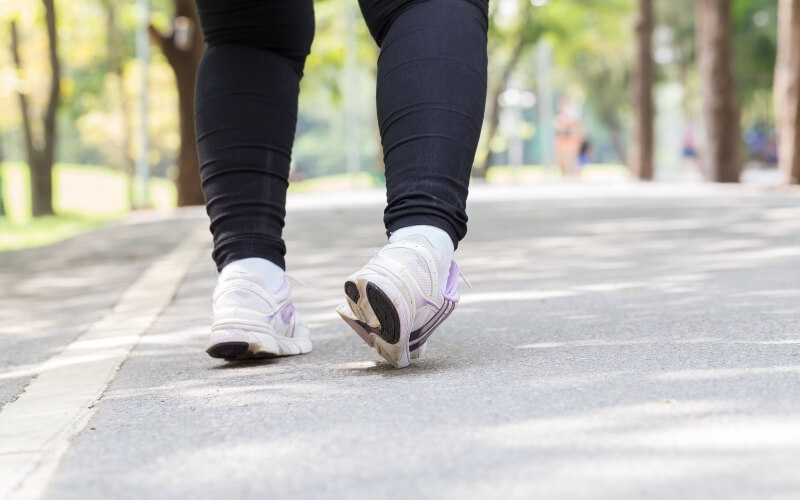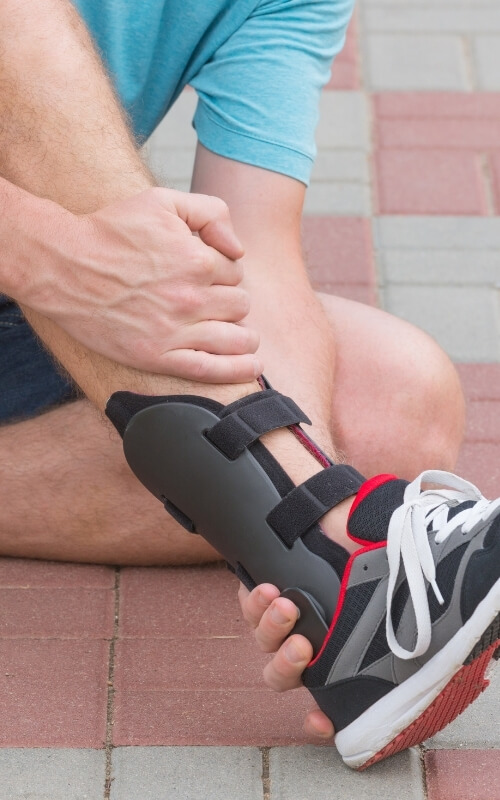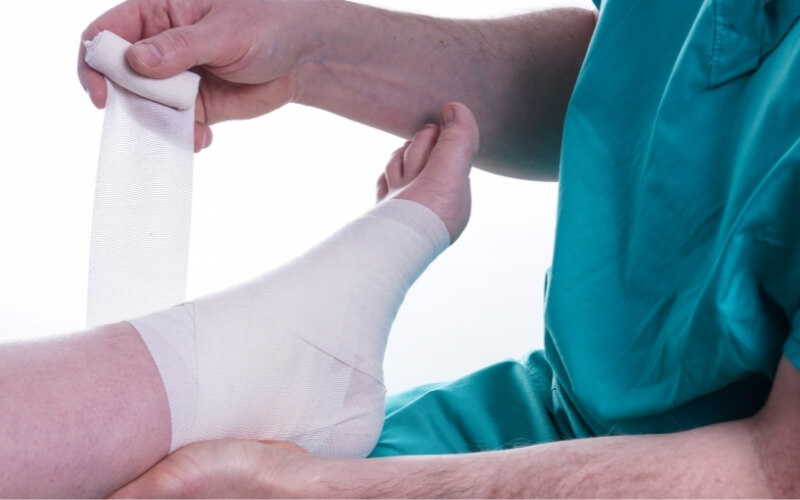Ankle sprains are a common sporting injury and can come in all shapes and sizes.
Often we hear of people spraining their ankles during sport and being able to “run it out” or just rest for a week to get things back to normal. In some cases you’ll get away with this approach, but understanding your injury and seeking help from a physiotherapist will reduce your recovery time and more importantly prevent the risk of further injury.
It’s important to understand that ankle sprains can come in various shapes and forms. This article will deal with the most common of ankle injuries known as the lateral ankle sprain – that’s sprains which occur on the outer part of the ankle.
Signs and Symptoms of a Lateral Ankle Sprain
Ankle sprains normally occur when you roll outwards on your ankle. The foot will turn inwards and the rest of the body will roll outwards. You’ll feel an immediate sharp pain on the outside of the ankle right at the tip of the ankle bone (technically known as the lateral malleolus).
Usually this will cause swelling to develop over the next 4-6 hours. It’s common to feel pain when walking and a sensation that the ankle will roll out again when you place pressure on it.
This ankle instability often causes chronic ankle problems and should be addressed by a physio immediately.
If you’re unable to place any pressure onto the injured foot while walking it’s important to undergo an x-ray to exclude a possible fracture.

What Happens in an Ankle Sprain?
The lateral ankle comprises of three ligaments – the ATFL, CFL and PTFL – connecting the shin bone to the foot. When compared to the ligaments on the inside of the ankle these lateral ligaments are small and thin.
Naturally a smaller ligament will not be able to withstand strong forces against them which is why ankle sprains are so common.
When we sprain the ankle the foot turns in and the body rolls out over the ankle, causing the ligaments to become overstretched and in some cases tear.
The severity of your ankle sprain (assuming only the ligaments are damaged) will be determined by both the number of ligaments injured and the degree to which they are torn. Significant tearing of the ligaments or tearing of multiple ligaments will result in ankle instability and the feeling that the ankle will continuously want to roll out again.

First Steps to Recovery
Like with most injuries, the first steps to recovery following an ankle sprain will be to protect the injury and facilitate proper recovery.
To stop the ankle from being reinjured, often this requires:
- rest
- ice packs
- elevation
- taping
In more severe cases, use of crutches and a moon boot will help further protect the ankle and ensure proper healing of the ankle ligament.
The length of the protective phase will vary depending on the severity of the injury but can last for up to three weeks.
It’s vital to seek help from your physio at this stage to prevent ankle stiffness, reduce swelling and set the basis for optimal recovery in the later phases.

Once the pain has been managed and inflammation settles, the goal will be to optimize your ankle function to ensure it’s safe to return to sport.
The first aspect of this is to make sure your ankle has full range of motion to prevent impingement and future damage. Once your movement is back to normal you will need to strengthen the ankle.
Naturally the limping around and time spent protecting the injured ligaments will result in muscle weakness. The longer you have to protect the ankle, the weaker your muscles will become, the longer it will take to return.
Ankle strengthening is an intricate process which should be guided by your physiotherapist. It involves a combination of calf strength, balance and proprioception, coordination and strength in ankle stabilizers. Because of the injury to the ankle ligaments, developing strength in the muscles surrounding these ligaments will help protect the ankle from further sprain.
When the ankle has returned to its pre-injury levels of function it’s time to return to sport. Often people will develop a fear of future ankle sprains. This is a normal experience to have and is often a sign that the ankle is not strong enough to get back to sports.
If you’ve undergone a staged rehabilitation under the guidance of a skilled physiotherapist, you’ll feel confident in returning to sports. Remember some situations will be unavoidable when you play high risk sports. For example, soccer players will often roll their ankles under a heavy tackle despite the ankle being full recovered. This circumstance has more to do with the external impact rather than a structural fault in the ankle.
Protecting The Ankle When Returning To Sport
I often get asked “will wearing a brace make my ankle weaker?”
It’s a fair question…the theory is that use of an ankle brace will reduce the amount of muscle activation required and therefore reduce muscle strength over time.
The answer I always give in response is that if you were to sprain your ankle again that would cause much more weakness and sometimes irreparable damage when compared to any weakness caused by the brace.
A brace is always advised if you’ve recently returned from ankle injury, had multiple ankle sprains or engage in sports with high risk of ankle sprains.

Should I Use a Brace or Tape For My Ankle Sprain?
Generally speaking, both braces and taping are useful and will work to protect the ankle following an ankle sprain.
Based on my personal experience and the experience of my patients, taping gives stronger protection but will loosen over time where a brace will remain tight for longer periods. Taping is more customizable so you can adjust the tightness and modify the pressure points applied to the ankle.
In the long term bracing is a much more cost effective method of protection and is less time consuming than taping.
Ankle braces will mostly benefit those intending the use the brace for longer periods or athletes engaging in high risk sports whereas taping will be effective for those who require a short-term solution for ankle stability.
Taping is more versatile and can be applied to situations other than ankle sprains such as high ankle sprains (syndesmosis injury), bifurcate ligament sprains and lateral ankle impingement.
Keep in mind some people will have an allergic reaction to the taping which will prevent them from using tape. In this case you should opt for the bracing option to prevent damage to the skin.

Seek Help From Your Physio
Ankle sprains can seem simple but if you get the rehabilitation wrong you could end up will severe and chronic ankle problems.
The most important time to seek help from your physiotherapist will be early in the rehabilitation process where you’ll be battling the inflammation, swelling and pain.
Your physiotherapist will ensure the ligaments heal correctly and ankle motion is restored quickly so you can get back to your sports quickly and safely.
One-on-One Physiotherapy Care - Complete Attention - You Deserve It !
Contact Us today to find out how we can help you.


